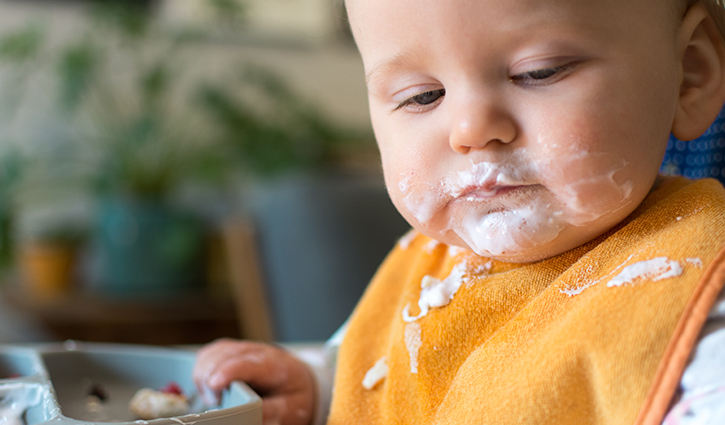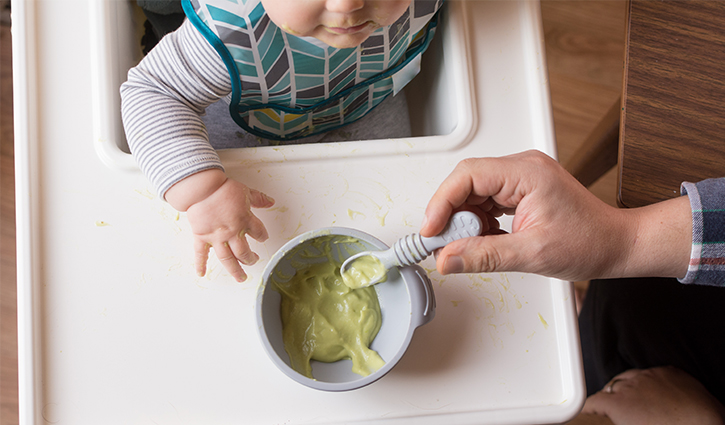

Introducing solids to your baby is an exciting but nerve-wracking experience for many parents. There are different methods of introducing solids, with two of the most popular being Baby-Led Weaning (BLW) and purees. In this blog post, we will discuss the differences between these two methods, their benefits, and any potential drawbacks. As often you will find that there is no right or wrong way, hopefully this blog post will help reassure you that you are doing what is right for your family.
Exploring the Benefits and Drawbacks of Baby-Led Weaning and Puree Feeding
What is Baby-Led Weaning?
Baby-Led Weaning (BLW) is a method of introducing solids to your baby in which you let them feed themselves with finger foods instead of spoon-feeding them purees. The premise is that since the WHO recommends introducing solids at 6 months of age, plus signs or readiness, babies have indeed passed the stage of liquid purees from a developmental perspective. The idea behind BLW is to encourage your baby to explore and develop their eating skills at their own pace.
What are purees?
Purees are a traditional method of introducing solids to babies. Purees are made by blending or mashing fruits, vegetables, or meats until they reach a smooth consistency that is easy for babies to swallow. Under six months of age, should it be recommended that solids are introduced to a baby, then they will need purees.
Benefits of Baby-Led Weaning
Encourages Self-Feeding and Independence
Baby-Led Weaning encourages self-feeding and independence. It allows babies to pick up food and explore different textures, tastes, and colours on their own. This helps them develop their hand-eye coordination and fine motor skills.
Introduces Different Textures
BLW helps babies develop a preference for different textures and flavours of food, especially as parents offer a version of their own meal, and adjust it to their child’s eating skills. This can lead to a more varied and nutritious diet in the long run.
May Reduce Fussy Eating
BLW encourages babies to try a variety of foods and explore different textures. It is thought that as babies gain independence, they may be less likely to be fussy eaters. However, in the world of extreme fussy eaters, there are families who have done everything by the BLW book.
Reduces the Need for Purees
With BLW, there is no need to make purees or buy jars of baby food. This can save parents time and money.
No Need for Special Equipment
BLW does not require special equipment, such as blenders or food processors. This makes it a convenient option for parents who are short on time or who prefer not to invest in additional kitchen tools.
Cons of Baby-Led Weaning
Risk of Choking?
There is no evidence of a higher risk of choking for babies who are fed with BLW as opposed to puree. In fact, with both methods parents have to pay attention and offer foods that are appropriate for the baby’s age and development level, and to supervise them closely while they are eating. Parents need to do the squish test by pressing food in between their fingers, and it should start to dissolve.
Benefits of Purees
Easy to Swallow
Purees are easy for babies to swallow, making them a good option for babies who are not yet ready for finger foods. Any baby who is started on solids before 6 months will need purees.
Nutritious and flavoursome
Purees can be made with a variety of fruits, vegetables, and meats, making them a nutritious option for babies. Parents can add iron rich food in purees, for example fish, meat, liver. Parents can also create multiple flavours with purees.
Identify texture sensitivity in children
With purees, parents have control over the texture of the food. This can be useful for babies who have trouble with certain textures or who are transitioning from liquids to solids. It’s important to know if children can manage textures and if they show a sensitivity to textures early on.

Cons of Purees
What About Self-Feeding Skills
Purees may not encourage self-feeding or independence, especially if parents tempted to avoid mess keep feeding their babies. If they choose to encourage self-feeding, they can introduce some finger foods as well as use 2 or 3 spoons, which they load and place on the child’s tray so they self-feed with their spoon.
Requires Special Equipment
Purees require special equipment, such as a blender or food processor, which can be time-consuming and expensive.
Conclusion
Both Baby-Led Weaning and purees have their benefits and drawbacks. BLW encourages self-feeding and independence, introduces different textures, and may reduce fussy eating. It is wise to use a mix of both methods, or combination feeding, as it can provide additional nutrition and flavours while enabling babies to develop a variety of skills with self-feeding and managing textures. Parents will do well to choose what is more suitable for their family.























